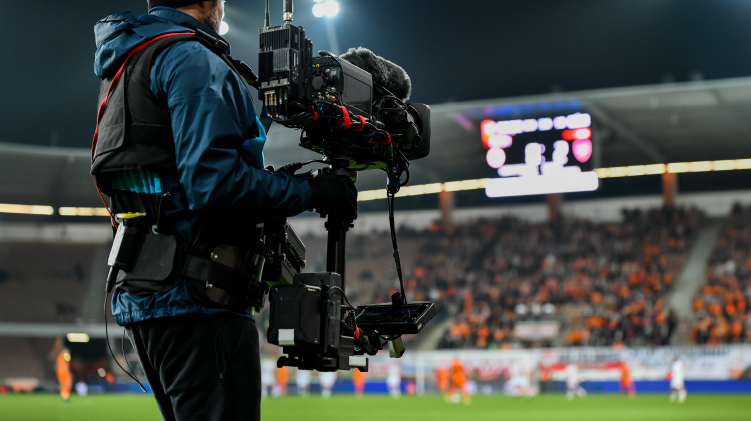How does one get all the devices used during video streaming to talk to one another? This basic communication of digital audio and video is facilitated by a protocol called NDI — but it wasn’t always the case. Let’s have a look at the background and fundamentals of NDI and how it can help you for your next streaming event.
The Need for a Digital Streaming Language
In the world of streaming, the most dominant tools for connecting devices prior to 2016 were HDMI and SDI. HDMI, though having a higher resolution, was expensive and had shorter cabling distances. SDI, while able to transmit uncompressed video over long distances, was expensive and usually required more complex, professional setups.
The rise of live-streaming and smartphones opened the door for more wireless and flexible streaming solutions. And so in April of 2016, the company NewTek launched its revolutionary NDI Protocol.
What is NDI?
NDI, or Network Device Interface, is a technology that allows video and audio signals to be transmitted over a regular internet network, such as your office’s Ethernet or Wi-Fi. Instead of relying on expensive and cumbersome cables, NDI uses the existing network infrastructure, making video and audio transmission simpler and more cost-effective.
NDI is a feature integrated directly into devices such as cameras computers and smartphones as well as web-based applications like Microsoft Teams. Basically when NDI is built into Teams a smartphone and a laptop it sets out how these multiple devices communicate with one another so that the video from the smartphone and laptop can be interpreted correctly by Teams.
For example, the NBA uses multiple cameras to capture every angle of a basketball game as well as shots of players and coaches. NDI is the language that is used between the control center and all the cameras and microphones so that all these images and audio can be understood and then combined together in its broadcast to create a unified program.
NDI is interesting as it shares data in both directions and it produces minimal lag time when playing a stream. Moreover, since it relies on a regular internet network, it eliminates the need for physical cabling to connect devices.
Why is NDI Important?
NDI revolutionizes how video signals are transmitted by simplifying the delivery and getting devices to communicate using the same language. Here are some of the benefits:
- High Quality Streams - This means 4K resolution, frame accuracy and low latency along with audio and metadata in the same stream. To get this kind of quality in streams from SDI, it would require expensive cables limited in length. NDI basically opened the door for IP connections.
- Discoverability - NDI devices are instantly discoverable in a standard IP network without any complicated setups. Previously, only certain devices could be connected via SDI, yet NDI enables seamless integration across a wide range of devices and platforms. This can expand the scope of the equipment and the area/locations being used to broadcast.
- Interoperability - NDI can be interoperable with an environment of thousands of hardware and software products. SDI was limited to particular devices with the right configurations, but the NDI protocol allows for easy expansion and reconfiguration of video networks, making it an ideal fit for ever-changing streaming environments.
How is NDI Used in AVer Pro AV Cameras?

NDI is deployed in networked cameras for video production and live streaming purposes. AVer Pro AV cameras use NDI HX & NDI High Bandwidth protocols allowing them to PTZ Cameras using the NDI protocol can stream high-quality video with minimal latency without the need and no need for additional hardware or complex setups. With NDI, any part of the office can become part of your live production. Different teams in a company can simultaneously stream videos from all over their office area or anywhere on their network — and these are just some of the possibilities.
What Are Some Applications of NDI in AVer Pro AV Solutions?
- Live Events Broadcasting - NDI is used to stream video from multiple cameras to a central mixing station, allowing for real-time editing and broadcasting. NDI cameras are a popular choice for professionals in the live-streaming industry because of their flexibility, cost-effectiveness, and ease of use. Recommended model: TR335N
- Corporate Training - companies use NDI streams to facilitate company onboarding or remote training sessions. Recommended model: PTZ330UNV2
- Education - Auto-tracking NDI cameras can stream a college lecture or presentation from a laptop to multiple projectors and remote student devices. Recommended model: TR315N
- Esports - NDI captures gameplay from various participants' computers and the PTZ cameras can stream it to a central hub, enabling live commentators to provide analysis and broadcast to viewers worldwide. Recommended model: PTZ310UNV2
- Virtual Instructional Classes - For a virtual cooking class, dual lens NDI cameras allow the instructor to switch between different camera angles, such as close-ups of the cooking process and wide shots of the kitchen. Recommended model: TR535N
- Telemedicine - NDI supports the transmission of high-quality video between healthcare providers and patients, improving the delivery of remote medical consultations and diagnostics. Recommended model: PTZ310UNV2
- Courtrooms & Governments - During a city council meeting, NDI can be used to stream live video from the council chambers to the public online. Recommended model: PTZ330UNV2
The Future of NDI
NDI is already a game-changing technology that has had a major impact on the Pro AV world. The protocol is evolving to make streaming that much more seamless amongst the growing amount of devices available.
Learn more about how AVer uses NDI in its award-winning cameras.
References
NDI® is a registered trademark of Vizrt NDI AB.